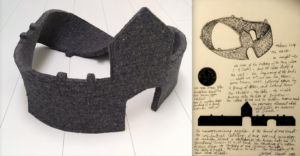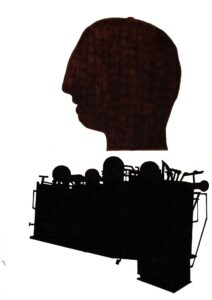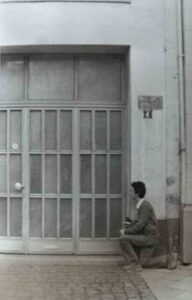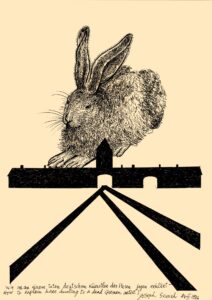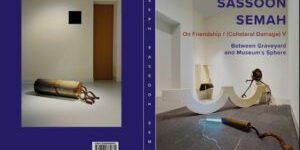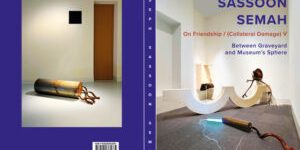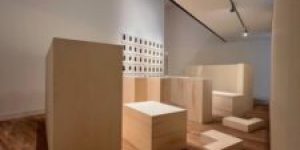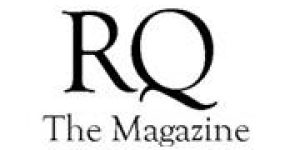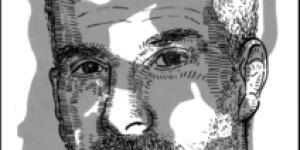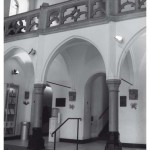Mati Shemoelof – Opening Words – On Friendship / (Collateral Damage) IV, October 28, 2021, Goethe-Institut Amsterdam, Performance
No Comments yet28 October 2021, 20.00 pm, Performance and Meeting – Mati Shemoelof (Poet, Author, Editor, Journalist, Berlin) & Joseph Sassoon Semah
The discussion about the creative activities of Joseph Beuys adhere to Eurocentric culture in general and to post-war German culture in particular. And yet, what will happen when two Iraqi Jews, i.e. Babylonian Jews – who live in two European capitals, Berlin and Amsterdam, respectively – decided to deconstruct Beuys’ post war art production.
Could we give these two guests who became our host free speech, and should we listen to their desire to reclaim the Jewish Babylonian tradition from Joseph Beuys’ art?
Most of the research on Joseph Beuys artistic activity has been generated by theories concerning Eurocentric culture, values and experiences, however this time we have the opportunity to hear other voices, a different reading that criticizes Beuys’ work.
Mati Shemoelof – Opening Words 28.10.2021. Goethe Institut – Amsterdam
Joseph Sassoon Semah’s artistic work criticizes and unmasks the work of Joseph Beuys, the most influential German artist post WWII. In his criticism of Beuys’ art, Joseph Sassoon Semah uses the term “An Oppressive memory”. To my mind, he means how an oppressor performs/re-presents/re-disguises himself as a victim and by doing so, he silences the victim.
Beuys, the big shaman of German art, spoke of the famous LEGEND of how his airplane was shot down and that he was saved by the Tartars. This is a myth that he created in order to make us feel compassion for his deeds.
Let us first state the facts: In 1936 Beuys was a member of the Hitler Youth. We know that it was compulsory, but later on, in 1941, Beuys volunteered for the Luftwaffe (the aerial warfare branch of the Wehrmacht during World War II). In 1942, Beuys was stationed in Crimea and was a member of various combat bomber units. From 1943 on he was deployed as a rear-gunner in the Ju 87 “Stuka” dive-bomber. Initially stationed in Königgrätz, later on in the eastern Adriatic region. On March 16th 1944, Beuys’ plane crashed on the Crimean Front, close to Znamienka. Records state that Beuys was conscious and recovered by German search commandos. There were no Tatars in the village at that time however. Beuys was then brought to a military hospital where he stayed for three weeks from March 17th to April 7th.
The research, texts, performances, art works and installations of Joseph Sassoon Semah today is a Babylonian Jewish de-construction of the artistic activities of Beuys from the center of Europe. In his artistic performance Joseph Sassoon Semah refers to two famous installations of Beuys. The first is the “Straßenbahnhaltestelle / Tram Stop” that was unveiled at the Venice Biennale of 1976. Joseph Beuys created a copy of a monument which was placed next to Tram Stop in Kleve – consisting of a field cannon crowned with a bust based on the figure of “Jean Baptiste Cloots”. Cloots was born in 1755 near Kleve, at the castle of Gnadenthal, and later called himself “Anachrsis Cloots”. He later joined the French revolution and symbolizes democracy.
Joseph Beuys’ Tram Stop in 1976 is in a matter of fact a memory of Beuys as a 5 year old kid waiting for the train that would take him to visit his uncle who lived in Kleve. Joseph Beuys explained that he used to cross the street and sit on the monument named by the city as the “Iron Man”; At a certain time, the field cannon was crowned with a cupid. So, the memory is love and the idea that democracy should be spread by the cannon, and not war.
In Kleve not so far from the tram stop, there was a Jewish synagogue that was destroyed by Nazi troops during Kristallnacht. And when you add the fact that Beuys himself was part of the Nazi air force you get a story of re-creating himself as a rebel figure. Meanwhile ignoring the authentic victim while re-presenting himself as a victim.
Joseph Sassoon Semah doesn’t forget Kleve’s synagogue, as well as the real actions of Beuys. He writes letters to Albrecht Dürer, another German artist, in order to penetrate the German and European cannon and to bring back the lost Jewish voice. He writes: “All in all, Jose[f]ph Beuys’ Straßenbahnhaltestelle / Tram Stop 1976 is physical – that is a real visible object in opposition – a manifestation to be contemplated from afar. The result of the intolerable conflict of false and true elements in Jose[f]ph Beuys’ ideology which he tried to expand – to escape as it were, from his impossibility, i.e. from his post-traumatic stress disorder into a symbolic Healer of post-war West Germany, and at the same time to foster its future reputation.”
In another famous Artwork Beuys planted 7000 Oak trees throughout the city of Kassel – each tree accompanied with basalt stone – as part of the seventh Documenta in Kassel (1982). Joseph Beuys’ idea was to breath life back into the emptiness and rubble of 7000 bomb holes that were left bythe carpet bombing made by the allies in WW2.
Joseph Sassoon Semah refers to different theological resources – the Bible and the New Testament – in order to find the origins of meanings of the number 7000.
1 Kings: 19: 17-18 “17. And it shall come to pass, that him that escapeth the sword of Hazael shall Jehu slay: and him that escapeth from the sword of Jehu shall Elisha slay. 18. Yet I have left me 7000 seven thousand in Israel, all the knees which have not bowed unto Baal, and every mouth which hath not kissed him.”
And the New Testament – Romans 11:4 – “But what saith the answer of God unto him? I have reserved to myself 7000 seven thousand men, who have not bowed the knee to the image of Baal.”
Joseph Sassoon Semah uses these two resources in order to re-capture the real essence of the number 7000. He also uses an additional theological resource to capture the essence of The OAK and the Stone from the Old Testament – The Bible tells us about the OAK AND THE STONE – Joshua 24 :25-27: “On that day Joshua made a covenant for the people, and there at Shechem he established for them a statute and ordinance. recorded these things in the Book of the Law of God. Then he took a large stone and set it up there under the oak that was near the sanctuary of the LORD. And Joshua said to all the people, “You see this stone. It will be a witness against us, for it has heard all the words the LORD has spoken. To us, and it will be a witness against you if you ever deny your God.”
To summarize my ideas until now, I want to contextualize why we are doing the action of planting an OAK tree and placing it next to a Stone originated from Jerusalem. Joseph Sassoon Semah wants to create a real new covenant with God. Not the God of the scripture, but the spiritual one. He reclaims the Jewish symbols which Beuys appropriated, and recreates a new symbolic order on the land of Europe. It is both an artistic moment and a spiritual one, both happening here on the European ground.
Beuys refers to Kleve with nostalgia and at the same time forgets about the Kristallnacht and his own involvement in WW2; Beuys also refers to the bombing of KASEL and forgets that it took place in order to defeat NAZI troops and to stop the destruction of Jewish life. In his position Beuys appropriates the victim voice but Joseph Sassoon Semah reclaims it and re-creates a new alliance with God using the old meaning of the Oak tree and the stone here in the garden of Goethe Institute.
2.
Joseph Sassoon Semah’s de-construction of Beuys art is also another dialogue that he conducts as an Israeli Jew who emigrated to Europe.
In his artistic performances and installations, he criticizes the admiration of Israeli artists toward Beuys.
In his insightful article, Dr. Kobi ben Meir writes about “Joseph Beuys and the Cultural Effect of Israeli Art of the 1970s”. I will use some of his ideas in order to reflect upon Joseph Sassoon Semah’s sharp artistic and poetic response to the Israeli admiration of Beuys’ art.
At the art school of Bezalel, Beuys became a revered hero, and Israeli artists made a pilgrimage to his Studio in Düsseldorf. The known Israeli artist David Ginaton says that he first heard about the beginning of the Yom Kippur War as he was he travelling by train to Düsseldorf. As soon as they arrived in Düsseldorf on the second day of the war, on October 7th, 1973, Ginaton went to Joseph Beuys’ home. After ringing the doorbell of Beuys’ house, his wife opened the door and said that her husband was out of town for several days. Ginaton’s partner photographed him kneeling in front of the door of the Beuys’ house.
It is interesting to examine how Ginaton positions himself in front of the closed door of Beuys’ house. When it comes to size ratios, the young artist appears small in size and is almost disappearing in front of the massively large door. He kneels like an admirer of a holly person, and while he lowers himself, he is looking up as if at a holy past or a coveted hero. Ginaton kneels outside the door frame in a sense the frame represents the high German art world to which he can’t enter. Therefore, Ginaton has no choice but to admire in reverence. Dr. Kobi ben Meir concludes that this admiration is a sign of pagan fetishism.
If we go back to the first part of my interpretation of the artistic work of Joseph Sassoon Semah, we will find the real man behind Beuys. The soldier, the oppressor who manipulates through his myth in order to transform himself into the voice of the oppressed. When we observe the kneeling of Ginaton in frontof Beuys door – We get a distorted image.
How is it possible then that the Israeli Jewish artists, most of them second-generation Ashkenazi Jewish Holocaust survivors – are kneeling in front of Joseph Beuys and not the other way around?
Only 30 years after 1945 Beuys transformed himself into an extraordinary identity, which somehow forced them to forget about his real past actions.
David Ginaton testifies that through this photo and others he sought to clarify the relationship between Israeli art and international art, and to discuss questions of influence and appropriation.
In this photograph, the Israeli artist reveals himself as inferior to European art as part of a central and peripheral relationship, both influential and influenced.
In his artistic works Joseph Sassoon Semah removes the veil and de-mystifies this distorted identity. Joseph Sassoon Semah is both a European/Amsterdam Based artist and a post-Israeli one. In having this dual identity he raises critical questions directed at the backbone of German and European art (Dürer-Beuys) and at the same time directs his artistic critical gaze towards the Israeli Jewish field of art to which he belonged before leaving Israel. He questions the reasons for the admiration that borders on self-cancellation.
There are several answers I can give as a commentator concerning these distorted relationships of the Israeli art world towards the image of Joseph Beuys:
1. The Israeli militarism, subconsciously is being connected to the figure of the German soldier, in which the Israeli admiration towards the Israeli soldiers is evident.
2. The insult felt by the survivors of European descent from Europe. Yes, the same Europe that annihilated their families, became a phantasmatic desire to be accepted by them.
3. There is an element of an imagined return to the ethnic hierarchies that existed before World War II, in which European Germans were above all and Asians were inferior. That is, in perverted peripheral/center relations that recur in the minds of the Ginaton as a symptom to the positioning of the Israeli art in relation to the European art.
You can read it well in the famous Hannah Arendt‘s quote in a letter she wrote from Jerusalem in 1961, when she was attending the Eichmann trial. Her description of the crowd at the courthouse, in a letter she sent to Jaspers, passes beyond condescension into outright racism: “On top, the judges, the best of German Jewry. Below them, the prosecuting attorneys, Galicians, but still Europeans. Everything is organized by a police force that gives me the creeps, speaks only Hebrew, and looks Arabic. Some downright brutal types among them. They would obey any order. And outside the doors, the oriental mob, as if one were in Istanbul or some other half-Asiatic country.”
Joseph Sassoon Semah’s gaze is a DOUBLE gaze, it resembles the double face of Janus the god of Gates: On the one hand, he deconstructs and demystify the admiration of the Israeli artist to Joseph Beuys. On the other hand, his artistic work criticizing and unmasking the work of Joseph Beuys and the whole European cannon.
He also uses old Biblical knowledge (don’t forget that he is the grandson of the last Rabbi of Bagdad). So, his art is also a living traditional performance that is very much inspired by the Jewish tradition in order to re-present and re-perform a new artistic, social and political, spiritual and geographical order between his Babylonian Jewish point of view and his temporary place /HaMakom – both towards the German European art and the Israeli art.
You May Also Like
Comments
Leave a Reply
